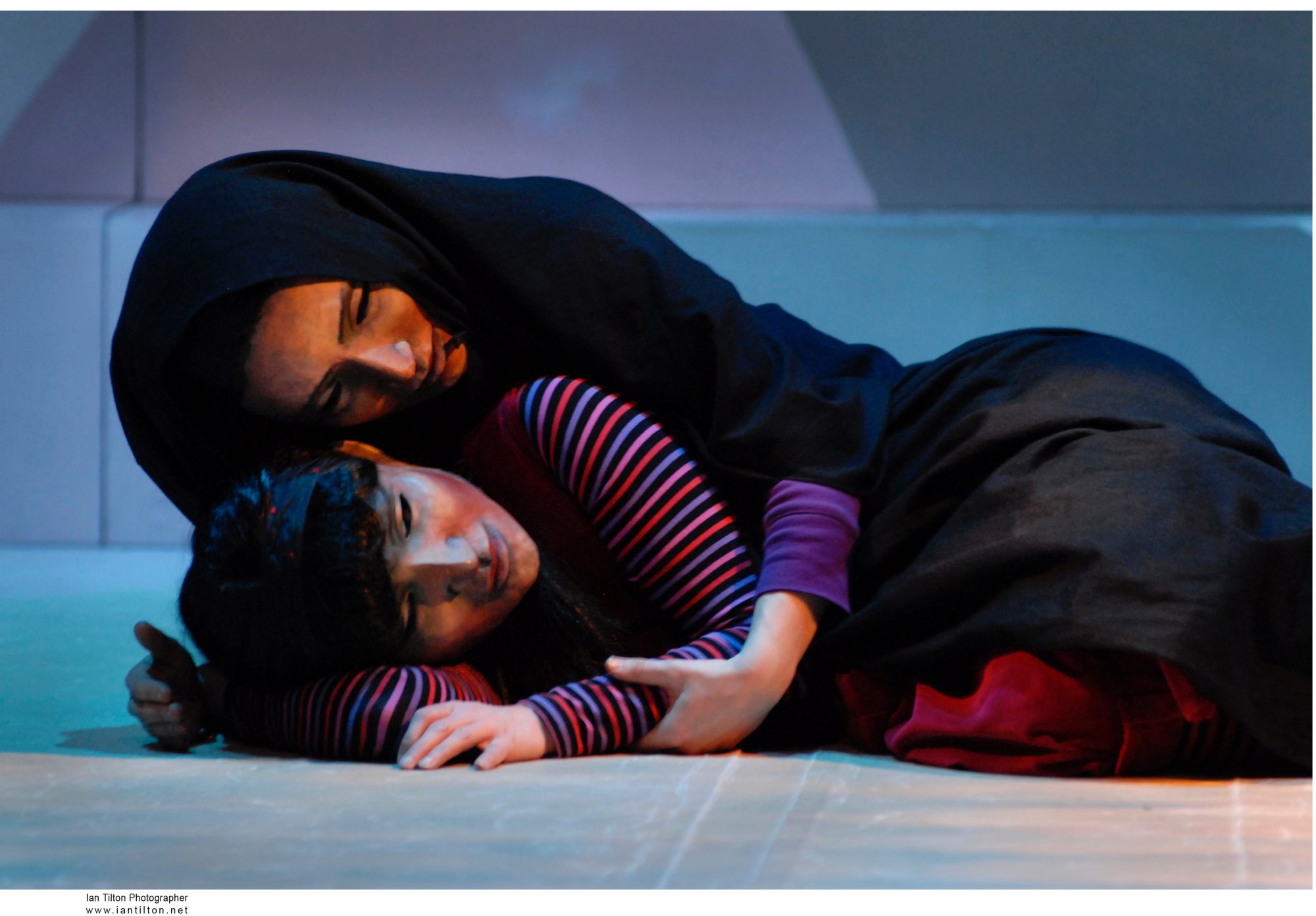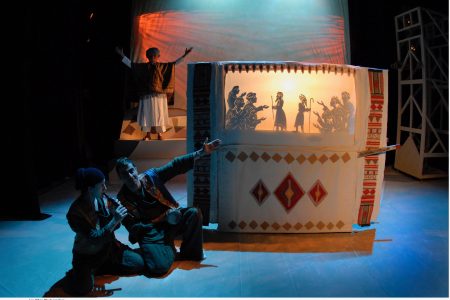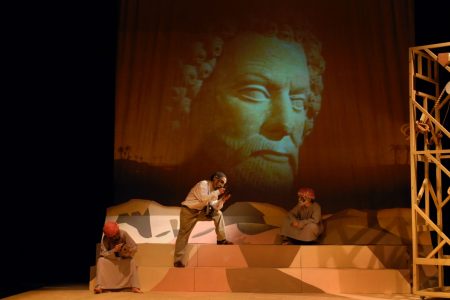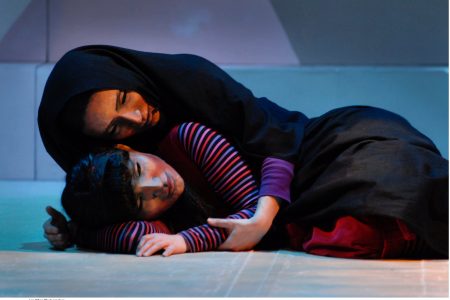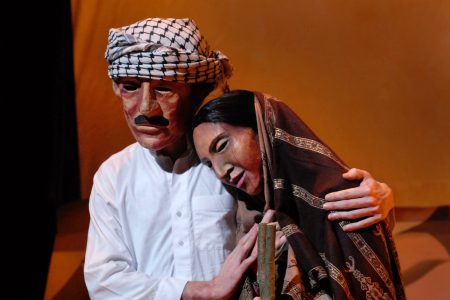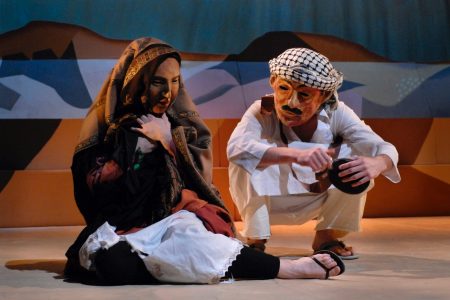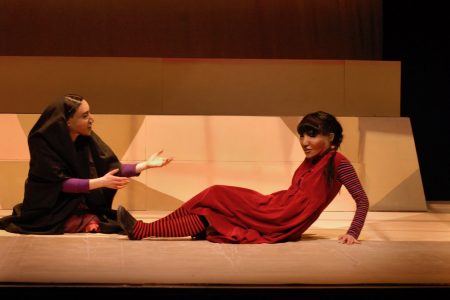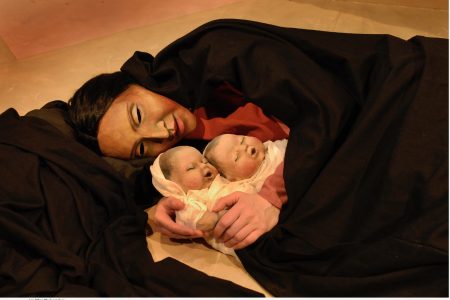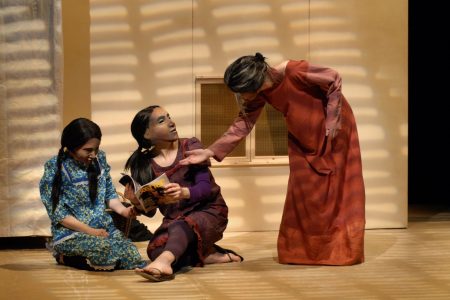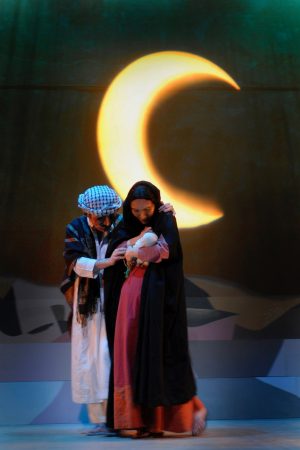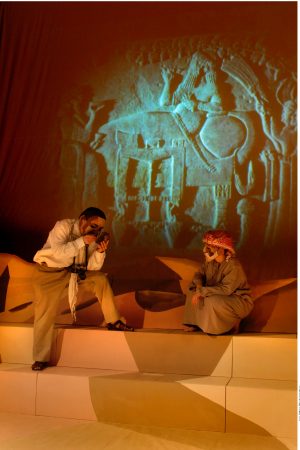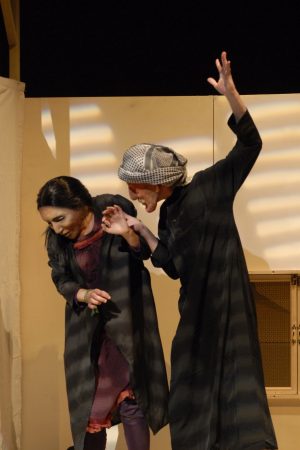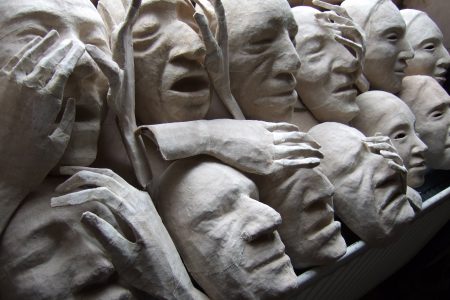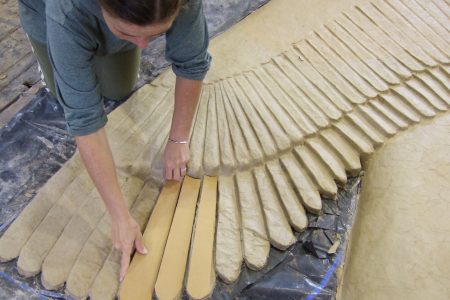The background to Veil
Veil grew out of the intersection of two things – the media obsession with the Islamic world, and pressure from the Arts Council to ‘professionalise’ the arts. The first part was fascinating to me, and I began to research the politics, history, and culture of the Middle East, particularly the Arab world. I wanted to understand as much as I could about these things. I met and talked with my good friends Parminder Kaur and Halima Cassell about their views and experiences. The issue of women wearing the burhka was very much in the news and Parminder introduced me to a number of her young women friends to talk about this and other related issues, and especially about the choices they were making in their own lives.
Veils come in many varieties
I came to see that veils came in all sorts of forms. Colonial history was a shady business, and in any case it was hugely misrepresented and misunderstood in the West. The plunder of the historic sites in the Middle East, which started in Napoleonic times, continued right through the world wars. The post-war ‘settlements’ that divided the Arab world into its current borders were decided largely in order to maintain western spheres of interest. The lure of enormous oil-based wealth was obviously the main determinant in more recent interventions. The scarves and burkhas worn by some of the women were almost the smallest part of it.
As a result of the Board’s determination to make a show that was capable of touring to larger venues I was given the opportunity to plan things on a grander scale than I had been able to since the 1990s. We had mixed fortunes in casting, but managed to contract Nabil Musa, an Iraqi Kurd, as a performer and advisor, and I had the support of an Arab artist, Faliha Kadhim, who had fled Baghdad a few years earlier, to help with the production.
I was pleased with the script, which brought together personal and historical stories in a broad sweep, moving through time from the ancient Kingdom of Babylon to present day London. I wanted to show that non-verbal, visual theatre was capable of creating large-scale, epic, tightly woven narratives. The story was a powerful one, and ambitious. It involved a rape, an ancient curse, dreams, the current military occupation of Iraq, and an archaeological dig in Nineveh. The emotional thrust was the search by twin sisters, separated at birth, to each rediscover their twin. The cast were good, Loz Kaye’s music was brilliant, the set by Katherina Radeva beautifully effective, and Richard Owen’s lighting and the film work by Erik Knudsen were fabulous. See the review below.
However, the Board’s financial hopes for the production were not to be realised. It proved difficult to sell to venues at the level that we needed to cover our costs. We had a reasonable opening run at the Lawrence Batley in Huddersfield, and a brilliant sell-out show at The Lowry, where it looked superb. Otherwise the tour was rather stunted, and it didn’t attain the optimistic targets that our Producer, Board and the various consultants were hoping for. Then, in September 2008 came the financial crash, and the hope of another more financially lucrative tour of Veil in 2009 and beyond, were dashed.
Veil is not only an evocative and haunting work but, unlike much visual theatre, presents a multilayered narrative full of depth and nuance. The central characters are twin sisters separated at birth and brought up in different cultures. The girls are born to an Iraqi woman raped by a Western archaeologist, who then steals one of the babies and returns home, along with the treasures he has removed from the desert.
The human story is a reflection of wider themes; of the pillaging of the country’s past, the influence of culture and the current conflict. The girls’ nightmares and sense of loss and separation seem to be a metaphor for the fears and mistrust separating East and West. The production itself is also multilayered. The narrative is played out using voices and visuals, puppetry and lighting, music mime and masks. The masks are a veil across the characters emotions and yet feelings are conveyed through body shape and gesture; through Loz Kaye’s mournful, lamenting score; and by a beautifully lit set which evokes the eyeblinking glare of the desert.
In the second half, the families’ fragmented story moves west. The girls, now grown women, eventually being reunited at an exhibition of the ageing archaeologist’s treasures. Again the secrets and lies of family life being echoed in wider conflicts of culture and identity. This is Horse and Bamboo’s 30th anniversary production and is a beautiful exposition of their visually arresting theatre. It is complex, but works wonderfully well on many levels, asking questions but allowing the audience to delve behind the veil as deeply as they want to.
BOB FRITH (wr. dir), LOZ KAYE (m), NABIL MUSA, FRANCES MERRIMAN, ZOILO LOBERA, TRACY BARGATE, TESS HILLS.
